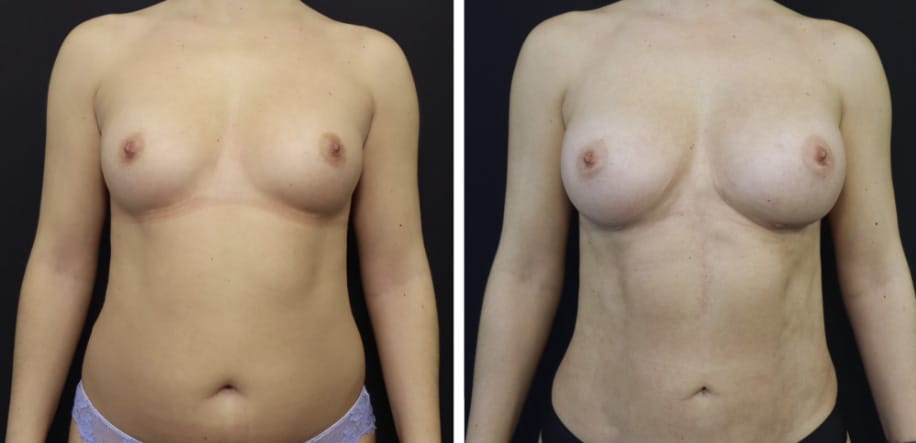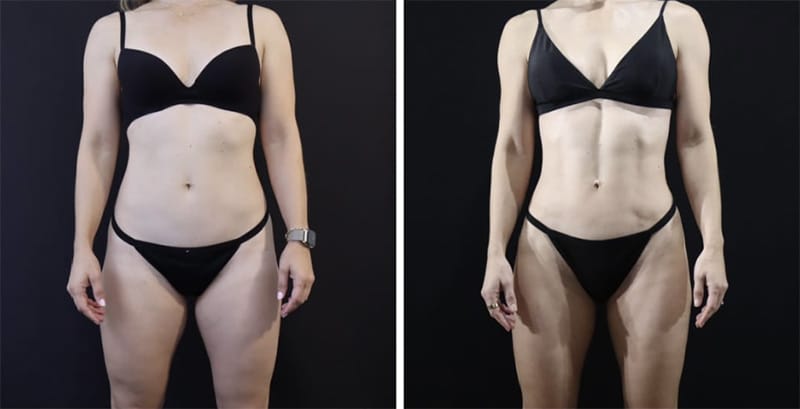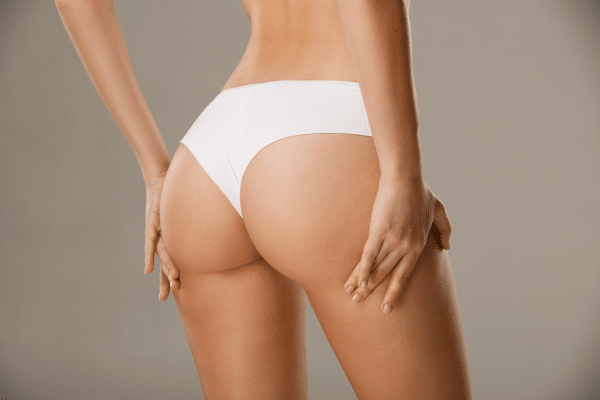What to Expect: Breast Fat Transfer After 5 Years
The breast fat transfer after 5 years, entails the transfer of fat cells from various body areas to the breasts. This cosmetic procedure serves to diminish excess fat in problematic regions such as the abdomen and flanks, while simultaneously enhancing volume and shape by reintroducing fat to the breasts.
Take a look at our impressive before and after outcomes from breast augmentation fat transfer surgery.
Breast augmentation through fat transfer typically yields a high success rate, and the favorable outcomes are long-lasting. Over a period of six months following the surgery, the relocated fat cells settle into their new position, and they should maintain their permanence thereafter.
Rarely, a situation occurs in which the fat cells do not adhere properly in their new location on the breasts. Alternatively, future weight fluctuations may also impact the effectiveness of this cosmetic procedure.
We frequently see patients who are considering a breast augmentation fat transfer surgery but are hesitant about the outlook of their results long-term. Below, we’ll examine the average permanence of a fat transfer breast, after 5 years and 1 year.

Fat transfer breast augmentation
WHAT TO EXPECT FROM A FAT TRANSFER AFTER 5 YEARS
According to information gathered from surgeons and other breast implant fat transfer surgery reviews and testimonials from patients, a breast augmentation fat transfer after 5 years should have an excellent outlook. That is, the initial results — if effective to begin with — should still be present after the five-year mark.
Of course, every patient is different, and results will vary. Still, for the majority of patients, the survival rate of fat cells that are relocated to the breasts is very good. This means that, over time, these fat cells will continue to perform the function of adding volume to the breasts.
At the same time, it’s important to remember that in five years, many things can change.
If a patient loses weight, for example, even though the relocated fat cells will still be in their new location in the breasts, they will shrink — as all fat cells do to some extent when fat loss occurs.
In a similar manner, as a patient ages, her breast tissue and skin will naturally begin to droop and sag. This is especially true when patients reach their 40s, 50s, and beyond (and particularly when a patient has poor skin elasticity). When the skin sags, the breasts will sag overall — even if there is adequate volume there — and this can make breasts appear smaller.
While the majority of patients are happy with their breast fat transfer surgery results after five years, these are just a few things to keep in mind in regards to the potential longevity of your breast surgery afterwards.
WHAT TO EXPECT FROM A BREAST FAT TRANSFER 1 YEAR LATER
The prognosis for fat transfer breast augmentation 1 year later is almost always good. Patients tend to be extremely happy with their results after one year.
By this time, the relocated fat has permanently adhered to the breast tissue. Therefore, the results should be fully visible, and as long as the patient is continuing on with healthy lifestyle choices and not gaining or losing too much weight, the results should be excellent and long-lasting.
Take a look at any breast augmentation fat transfer 1 year later before and after photos, and you should see amazing results.
WHAT POTENTIAL EFFECTS ARE THERE?
When patients want breast lift done to increase the volume of their breasts, many opt for a breast fat transfer over breast augmentation surgery with implants.
This is often because patients believe that implants may have less side effects and potential risks than other procedures.
In some ways, this is true, and in some ways, it’s not.
To start with, although breast implants may result in side effects such as capsular contracture, this is rare. Most patients who get breast implants are extremely happy with their results and have few, if any, side effects.
Furthermore, breast fat transfer procedure can have side effects as well. Again, these are also rare. But they may occur. Let’s go over a few potential side effects that may occur with breast fat transfer procedure, also known as fat grafting surgeries.
To start with, as with any surgery, there is always a risk for infection. Fortunately, the fat grafting procedure is minimally invasive, so the risk of infection is quite small. However, it is something to think about with any type of surgery.
Next, there are two potential side effects that may occur regarding how the fat adheres — or doesn’t adhere — to its new location on the breasts.
First, there’s the potential for fat reabsorption. This occurs when your body absorbs the relocated fat, so it doesn’t adhere and flourish in its new location. Experts say that as many as half of the relocated cells may be reabsorbed and will therefore not contribute to your fat transfer results. In addition, there’s the potential for fat grafting necrosis.
This occurs when fat grafting cells die in their new location and sometimes form lumps or small bubbles around the breasts. If this happens, you may notice lumps, bruising, redness, and discomfort on your breasts.
Fortunately, the risk of these side effects are small. Speak to your surgeon if you have concerns about these issues.
TIPS FOR ENSURING GREAT FAT TRANSFER RESULTS
The good news regarding your potential for great breast fat transfer breast augmentation results long-term is that you have some influence over the outcome. That is, there are things you can do to boost the effectiveness of your fat transfer breast augmentation over time.
Here are some tips:
SLEEP PROPERLY AFTER SURGERY.
Right after surgery, sleep only on your back to allow the new fat grafting cells a chance to adhere properly.
DON’T SMOKE.
Smoking reduces the effectiveness of this surgery.
WEAR THE PROPER CLOTHING.
Compression garments can help on the areas where you’ve had liposuction. But make sure to wear loose fitting clothing around your breasts so that fat reabsorption does not occur.
DON’T ALLOW YOUR WEIGHT TO FLUCTUATE TOO MUCH.
Drastic weight fluctuations after surgery can alter your results.
FOLLOW DR. SIEBER’S DIRECTIONS.
Do not deviate from the aftercare plan provided to you by Dr. Sieber.
QUESTIONS AND ANSWERS
HOW LONG DOES BREAST AUGMENTATION FAT TRANSFER LAST IN BREASTS?
Generally speaking, fat transfers are considered permanent, long-lasting procedures. Professionals agree results remove fat and should last between two and five years — or longer in many cases.
Still, exactly how long your results will last depends on several factors. Your lifestyle and habits, age, BMI, and overall health will influence the longevity of your fat transfer. If patients do notice a loss of volume and plumpness as years go on, it’s not uncommon to schedule a touch-up fat transfer procedure.
WHAT IS THE SUCCESS RATE OF FAT TRANSFER TO BREAST?
The vast majority of breast fat transfers are highly successful. The procedure is considered overall safe, and generally speaking, patients are very happy with cosmetic procedures and their results.
Still, there are multiple factors that may influence how successful any plastic surgery is. Ultimately, it comes down to the health and lifestyle of the patient, the experience and talent of the plastic surgeon, and how the patient handles their recovery.
For these reasons, it is of the utmost importance that patients fully understand their responsibilities during recovery. It is also crucial to discuss the potential complications and risks of surgery prior to the procedure.
WHAT ARE THE LONG TERM RESULTS OF FAT TRANSFER?
Fat transfer results can last 2-5 years or longer, but some fat cells may be absorbed by the body over time and touch-ups may be required. Factors like weight changes, aging, and the patient’s overall health can impact results. A qualified plastic surgeon can provide more information on long-term outcomes.
HOW LONG DOES IT TAKE FOR A FAT TRANSFER TO LOOK GOOD?
Right after surgery, patients will experience swelling, bruising, tightness, and discomfort. These symptoms may persist for several weeks, and swelling may persist for several months more. Ultimately, it can take up to six months for patients to see their full results.
WHAT HAPPENS IF YOU GAIN WEIGHT AFTER FAT TRANSFER BREAST AUGMENTATIONS?
If you gain weight after a fat transfer breast augmentations, the volume of fat injections your breasts may increase, but this increase is likely to be uneven, causing changes in the shape and symmetry of your breasts. Significant weight gain can also cause the transferred fat cells to shrink, leading to a reduction in breast volume.
SHOULD YOU LOSE WEIGHT BEFORE A FAT TRANSFER?
While weight isn’t everything when it comes to fat transfer breast augmentation, it is an important factor to consider prior to surgery. There aren’t any hard and fast rules when it comes to how much an individual should weigh; however, those who are obese or significantly overweight may not qualify. Patients who are at a healthy, stable weight will be safer during surgery, recover better after surgery, and maintain superior results.
If a patient does not qualify for this surgery because of their weight, they can try to lose weight through a healthy lifestyle diet and exercise before scheduling another appointment to discuss their candidacy for a fat transfer procedure.
HOW SKINNY IS TOO SKINNY FOR FAT TRANSFER?
What’s most important to consider in terms of body weight prior to a fat transfer procedure is how much excess fat you have. Weight as a number on the scale, therefore, is less of a concern.
Some individuals who are within a healthy body weight range and have a BMI on the higher end may simply not have enough extra fat on their body to perform this procedure. Alternatively, others who actually have a BMI on the low end may have enough fat.
In addition, it is important to note that if a patient has too much extra body fat, they may be disqualified for this procedure as well. In the end, your plastic surgeon really needs to see you in person and assess your anatomy and body fat percentage before determining if you are a good candidate for this procedure.
 HOW MANY CUP SIZES CAN YOU GO UP WITH FAT TRANSFER?
HOW MANY CUP SIZES CAN YOU GO UP WITH FAT TRANSFER?
Most plastic surgeons agree that a fat transfer to the breast procedure can help a patient go up one to two cup sizes. This depends, however, because some patients won’t have enough excess fat to go up even one cup size. Alternatively, other patients may have a lot of excess fat — enough to go up even more than two cups sizes.
With that said, there is a limit to how much fat can be transferred to the breasts. It is not safe to put too much fat in the breasts as complications may occur. If you want to go up more than two cups sizes, it’s generally recommended that you get breast implants. As always, it is critical that patients have realistic expectations prior to undergoing this or any plastic surgery.
WHAT HAPPENS IF YOU DON’T HAVE ENOUGH FAT FOR FAT TRANSFER?
While many patients are interested in getting a fat transfer to the breasts, not everyone is a good candidate. The major reason for this is that not everyone has enough excess fat to be “harvested”. If this is the case for you, your plastic surgeon will probably recommend a different procedure such as breast augmentation with implants.
How much fat do you need? This depends, but typically, patients will need to have between 100 and 200 cc of extra, unwanted fat on their body before they can undergo this procedure. While some patients may consider gaining weight before undergoing a fat transfer, this is typically not recommended.
CAN FAT TRANSFER TO BREAST CAUSE LUMPS?
Fat transfer to the breasts can cause lumps, although this is not a common side effect. The development of lumps can occur if the injected fat forms small collections or if there is uneven distribution of the transferred fat.
These lumps may be felt as small, firm, and movable masses under the skin. In most cases, these lumps can be resolved through gentle massage and over time as the transferred fat integrates with the surrounding breast tissue.
To minimize the risk of lumps after breast fat transfer, it is essential to choose a qualified and experienced plastic surgeon with a track record of achieving natural-looking results. Your surgeon will also evaluate your breast tissue and advise you on the appropriate amount of fat to be transferred to minimize the risk of developing lumps.
It is important to closely follow the post-operative instructions provided by your surgeon to promote proper healing and recovery. If you notice any unusual lumps or changes in your breasts, it is important to contact your surgeon for an evaluation.
LEARN ABOUT fat transfer breast augmentation AFTER 5 YEARS WITH A CONSULTATION
Patients who are considering a breast fat transfer must qualify for the procedure before they can schedule their surgery.
In addition to being in overall good health, eating a healthy diet and at a steady weight they hope to maintain in the future, patients for breast reconstruction also need to have enough excess fat on their body so that it can be relocated to the breasts.
Furthermore, it is important that patients understand that breast fat transfer augmentation vs breast implants can only increase the overall size of the breasts a modest amount. For more drastic changes in breast size, implants may be necessary.
If you would like to learn more about natural Breast Fat Transfer After 5 Years and find out if you are a good candidate for surgery, contact Sieber Plastic Surgery today to book a consultation appointment with double board-certified plastic surgeon San Francisco Dr. David Sieber.




 HOW MANY CUP SIZES CAN YOU GO UP WITH FAT TRANSFER?
HOW MANY CUP SIZES CAN YOU GO UP WITH FAT TRANSFER?
 Vaser liposuction is an excellent solution to stubborn fatty tissue that won’t go away with diet and exercise. Get the body you’ve worked hard for! Vaser lipo could be the answer.
Vaser liposuction is an excellent solution to stubborn fatty tissue that won’t go away with diet and exercise. Get the body you’ve worked hard for! Vaser lipo could be the answer.
 The mommy makeover is highly individualized, so no two mommy makeovers will be the same. During your consultation, you can discuss your personal aesthetic goals, and Dr. Sieber will create a customized mommy makeover surgery
The mommy makeover is highly individualized, so no two mommy makeovers will be the same. During your consultation, you can discuss your personal aesthetic goals, and Dr. Sieber will create a customized mommy makeover surgery Women who are healthy and wish to restore their pre-baby figure can often benefit from a this surgical procedure. The best time to undergo this procedure is when you are done having children, and at least six months after you have finished breastfeeding.
Women who are healthy and wish to restore their pre-baby figure can often benefit from a this surgical procedure. The best time to undergo this procedure is when you are done having children, and at least six months after you have finished breastfeeding.